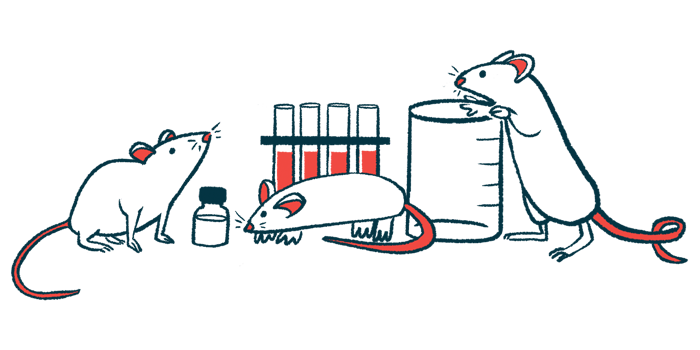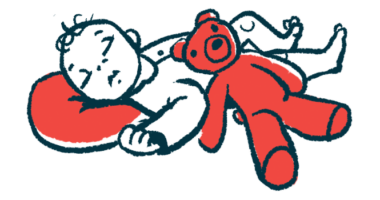Gene, enzyme replacement improve mice’s breathing, limb strength
Researchers tie gains to glycogen clearance in tongue, lungs, diaphragm

Gene and enzyme replacement therapies for Pompe disease improved breathing and limb strength in a mouse model of the disease, a study showed.
The researchers said the improvement was associated with glycogen clearance in the tongue, the lungs, and the diaphragm, the main muscle involved in respiratory control. Glycogen is a stored form of glucose, or sugar — the body’s main source of energy — that accumulates to toxic levels in Pompe patients.
Both types of therapies markedly increased the activity of acid alpha-glucosidase (GAA), the enzyme that’s missing or dysfunctional in Pompe.
The study, “GAA replacement improves respiratory muscle, neural, and alveolar pathology in the pompe mouse,” was published in Respiratory Physiology & Neurobiology.
Pompe disease is caused by mutations in the GAA gene, which codes for the GAA enzyme. Having none of this enzyme, or an impaired form of it, results in an abnormal accumulation of glycogen inside lysosomes, the cellular compartments responsible for the breakdown and recycling of used molecules, particularly in muscle cells.
Gene, enzyme replacement therapies
Enzyme replacement therapies (ERTs), which involve administering a working version of the GAA enzyme, are a standard form of Pompe treatment. ERT has been shown to extend survival and slow the progression of muscle damage, but its effects on respiratory issues remain unclear. Gene therapies, which work by delivering a healthy copy of the GAA gene to the body’s cells using an adeno-associated virus (AAV), are under clinical investigation.
Researchers at Duke University used a mouse model of Pompe to compare the benefits of ERT and experimental gene therapies in respiratory function. Four groups of mice were used. One group received an engineered form of human GAA (ERT), two received gene therapies called AAVcc47-GAA and AAV9-GAA, and the fourth was a control group. Gene therapies were administered once by intravenous (into-the-vein) infusion, while ERT was given once a week, also by intravenous administration, through study completion at nine months.
Pompe mice treated with the AAV9 gene therapy or ERT experienced improvements in respiratory capacity to a level similar to control (healthy) mice, but those treated with the AAVcc47-GAA gene therapy did not. Both gene therapies, and also the ERT, improved the animals’ limb strength.
Both gene therapies increased GAA activity and glycogen clearance in skeletal muscles (tongue, a leg muscle called tibialis anterior, and diaphragm) the heart, and the lungs.
Similar effects were seen for ERT, although lower levels of glycogen clearance were seen in the diaphragm and leg muscle compared with the gene therapies. In the heart, there was nearly a complete elimination of glycogen with all treatments.
Results further showed increased GAA levels in motor neurons involved in breathing control in mice receiving the gene therapies, but not in those receiving ERT.
The gene therapies also improved the integrity of the neuromuscular junction — the site where nerve cells and muscles communicate — in the diaphragm. However, in mice receiving ERT, neuromuscular junctions remained significantly disrupted.
A previous study by the team showed that GAA deficiency in the cells that line the lung alveoli — the tiny air sacs within the lungs where gas exchange takes place — is associated with significant disease-related changes and respiratory insufficiency in Pompe mice. Here, the researchers demonstrated that mice treated with any therapy had higher levels of GAA in the lung, with moderate benefits in alveolar structure.
Pompe mice experienced accumulation of LAMP1, a lysosome marker, in lung alveoli. Treatment with either form of therapy eased this accumulation.
“AAV-GAA gene therapy is a promising alternative to ERT,” the researchers wrote. “The primary advantages of gene therapy are the need for fewer administrations (single administrations are likely to last several years) and the ability to cross the blood-brain barrier to treat the nervous system.”







